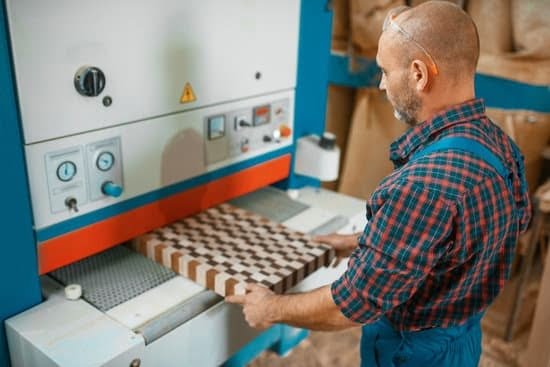Latex paint is a popular choice for woodwork due to its durability and easy cleanup. However, there may come a time when you need to remove old latex paint from wood in order to refinish or repaint the surface.
In this article, we will explore how to remove latex paint from woodwork using various methods and techniques. Whether you are tackling a large renovation project or simply refreshing the look of your woodwork, it’s important to understand the best practices for safely and effectively removing latex paint.
Before diving into the specific tools and techniques for latex paint removal, it’s essential to have a solid understanding of what latex paint is and why it is commonly used on wood surfaces. We’ll also cover the importance of properly removing latex paint from woodwork in order to avoid damage to the underlying surface and ensure a smooth finish when repainting.
Whether you’re dealing with intricate trim, baseboards, doors, or furniture, knowing how to remove latex paint from woodwork is a valuable skill for any DIY enthusiast or homeowner.
In addition to learning about the characteristics of latex paint and its application on wood surfaces, we’ll discuss the necessary tools and materials needed for successful paint removal. This includes everything from chemical strippers and heat guns to sanding equipment.
By being well-prepared with the right products and techniques, you can approach the task of removing latex paint from woodwork with confidence and achieve professional-looking results. So let’s dive in and explore how to effectively tackle this common home improvement challenge.
Tools and Materials Needed for Latex Paint Removal
When it comes to removing latex paint from woodwork, having the right tools and materials is essential for a successful outcome. Here, we will discuss the necessary items you’ll need to effectively remove latex paint from woodwork. Whether you are stripping an old piece of furniture or refinishing your trim, having the proper equipment can make the process much easier.
Tools for Latex Paint Removal
Some of the essential tools for removing latex paint from woodwork include a putty knife, paint scraper, and fine-grit sandpaper. A heat gun or chemical paint stripper may also be necessary depending on the size and type of woodwork you are working with. These tools will help in loosening and scraping off the old paint without damaging the underlying surface.
Materials for Latex Paint Removal
In addition to the tools mentioned above, you will also need specific materials such as a drop cloth to protect surrounding surfaces, gloves to protect your hands, and eye protection to shield your eyes from any debris. Depending on your chosen method of paint removal, you may also need a chemical paint remover or solvent. It’s crucial to choose high-quality products that are suitable for use on wood surfaces.
Recommendations for Specific Products
There are various products on the market specifically designed for removing latex paint from woodwork. Look for environmentally friendly options if possible and always follow the manufacturer’s instructions for best results. Some popular brands include Citristrip and Klean-Strip, which offer effective solutions for safely removing latex paint without causing harm to the wood surface underneath.
By ensuring that you have all the necessary tools and materials before starting the project, you can streamline the process of removing latex paint from woodwork while achieving professional results. Taking time to gather quality equipment will make the task more manageable and help in ensuring that no damage is done to your precious wood surfaces while undertaking this project of how to remove latex paint from woodwork.
Preparing the Woodwork for Paint Removal
Before you begin the process of removing latex paint from woodwork, it’s important to take some necessary steps to prepare the area. Firstly, make sure to cover and protect any surrounding surfaces or items that could be affected by the paint removal process. This can include floors, furniture, and other fixtures in the vicinity. Additionally, ensure that the work area is well-ventilated to minimize fumes and allow for proper air circulation.
Next, it’s crucial to wear the appropriate protective gear when handling any chemicals or tools during the paint removal process. This includes gloves, safety goggles, and a mask to avoid inhaling harmful particles or vapors. It’s also recommended to work in an area with good lighting to effectively see what you are doing and prevent any accidents.
Once these preparations are in place, you can proceed with caution and confidence knowing that you have taken the necessary precautions for a safe and successful latex paint removal from your woodwork.
| Preparation Steps | Recommendation |
|---|---|
| Covering surrounding surfaces | Use drop cloths or plastic sheets to protect floors and furniture |
| Wearing protective gear | Gloves, safety goggles, and mask should be worn at all times during the paint removal process |
| Adequate ventilation | Work in a well-ventilated area or use fans to improve air circulation |
Techniques for Removing Latex Paint From Woodwork
When it comes to removing latex paint from woodwork, there are several techniques that can be used depending on the size of the project and the level of detail required. One of the most common methods is using a chemical paint stripper, which involves applying the product to the painted surface, allowing it to soften the paint, and then scraping it away. This method is effective for large areas but requires caution when handling potentially hazardous chemicals.
Another popular technique for removing latex paint from woodwork is using a heat gun. By applying heat to the painted surface, the paint will start to bubble up and can be easily scraped away. This method is best suited for smaller areas or intricate details due to its precision and control. However, it’s important to use this tool carefully to avoid damaging the wood or causing a fire hazard.
Finally, sanding is also an effective method for removing latex paint from woodwork, especially when dealing with stubborn or multiple layers of paint. Using a combination of coarse and fine sandpaper, the painted surface can be smoothed down until all traces of latex paint are removed. However, this method requires patience and attention to detail in order to prevent over-sanding or uneven surfaces.
| Technique | Benefits |
|---|---|
| Chemical Paint Stripper | Effective for large areas |
| Heat Gun | Precision and control for intricate details |
| Sanding | Effective for stubborn or multiple layers of paint |
By carefully considering the size and intricacy of your woodwork project, as well as taking safety precautions, you can choose the best technique for removing latex paint that will yield optimal results.
Safety Precautions to Consider
When it comes to removing latex paint from woodwork, safety should always be a top priority. Working with chemicals and tools can pose potential risks, so it’s important to take certain precautions to ensure the process is carried out safely.
Proper Protective Gear
Before starting the paint removal process, it’s essential to wear the right protective gear. This includes gloves, safety goggles, and a respirator or mask to prevent inhaling any fumes or particles. Latex paint removers and chemical strippers can contain harsh chemicals that may cause skin irritation or respiratory issues if proper protection is not worn.
Well-Ventilated Area
It’s crucial to work in a well-ventilated space when removing latex paint from woodwork. This helps to minimize exposure to any potentially harmful fumes and ensures proper air circulation during the paint removal process. If working indoors, consider opening windows and using fans to improve ventilation.
Handling Hazardous Chemicals
When using chemical strippers or other products containing hazardous materials, it’s important to follow the manufacturer’s instructions carefully. This includes storing and disposing of these chemicals properly to avoid any accidents or environmental harm. Additionally, be sure to keep these products out of reach of children or pets and refrain from smoking or eating while handling them.
By taking these safety precautions into account, you can effectively remove latex paint from woodwork while minimizing any potential risks to yourself and others. Prioritizing safety throughout the entire paint removal process will contribute to a successful outcome without compromising your well-being.
Cleaning and Preparing the Surface for Repainting
After successfully removing latex paint from woodwork, the next step is to clean and prepare the surface for repainting. This crucial step ensures that the new coat of paint or finish will adhere properly and result in a smooth and professional-looking finish. Here are the steps to follow when cleaning and preparing the surface for repainting:
1. Clean the Surface: Use a mild detergent or TSP (trisodium phosphate) mixed with water to thoroughly clean the woodwork. This will help remove any debris, dust, or residue left behind from the paint removal process. Rinse the surface with clean water and allow it to dry completely before proceeding.
2. Sanding: Once the surface is dry, lightly sand it with fine-grit sandpaper to smooth out any rough spots or imperfections. Sanding also helps to promote better adhesion of the new paint or finish. Be sure to wipe away any dust with a tack cloth after sanding.
3. Priming: Before applying a new coat of paint, it’s important to prime the woodwork to create a smooth and uniform base for the paint to adhere to. Choose a good quality primer that is suitable for use on wood surfaces and apply it according to the manufacturer’s instructions.
4. Painting: After allowing the primer to dry completely, you can proceed with painting the woodwork in your desired color and finish. Apply the paint evenly using smooth brush strokes or a high-quality paint sprayer for best results.
By following these steps, you can ensure that your woodwork is properly cleaned and prepared for repainting after removing latex paint. This will result in a professional-looking finish that will enhance the beauty of your woodwork and protect it for years to come.
For more guidance on this topic including professional advice about “how to remove latex paint from woodwork,” always consult with experts who have extensive experience in working with wooden surfaces like contractors or carpenters who are able doing woodworking projects. Always consider testing an inconspicuous area first before applying any cleaning solutions or products onto your entire project piece just in case there maybe damage made during use that could potentially impact otherwised unaffected areas if not carefully tested first.
Common Mistakes to Avoid
When it comes to removing latex paint from woodwork, certain mistakes can lead to unnecessary damage or a less-than-ideal result. To ensure a successful paint removal process, it’s important to be aware of these common pitfalls and how to avoid them. Here are some tips for avoiding common mistakes when removing latex paint from woodwork:
1. Not Preparing the Surface Properly:
Before attempting to remove latex paint from woodwork, it’s crucial to prepare the surface adequately. This includes cleaning the area thoroughly and removing any existing finishes or sealants that may hinder the paint removal process. Skipping this step can result in an uneven or incomplete removal of the paint.
2. Using the Wrong Tools or Techniques:
Different types of woodwork may require different methods of paint removal. Using the wrong tools or techniques for a particular type of wood can lead to damage such as gouging or scratching. It’s essential to research and understand which tools and techniques are best suited for the specific type of woodwork being worked on.
3. Neglecting Safety Precautions:
Failing to take proper safety precautions when removing latex paint from woodwork can result in health hazards and accidents. Always wear appropriate protective gear such as gloves, goggles, and a respirator when working with chemical strippers or sanding materials. Additionally, work in a well-ventilated area to minimize exposure to fumes.
By being mindful of these common mistakes and taking the necessary precautions, individuals can successfully remove latex paint from woodwork without causing any damage or harm. Following proper procedures and using the right tools will ensure a smooth and efficient paint removal process, ultimately preparing the woodwork for a fresh coat of paint or finish.
Conclusion and Final Tips
In conclusion, removing latex paint from woodwork can be a challenging task, but with the right tools, materials, and techniques, it is certainly achievable. It’s important to understand the nature of latex paint and its common use on woodwork, as well as the significance of properly removing it to maintain the integrity and aesthetics of the wood.
When it comes to removing latex paint from woodwork, having the necessary tools and materials is crucial. From chemical strippers to heat guns and sanding equipment, there are various options available for this task. Additionally, preparing the woodwork for paint removal and taking safety precautions are essential steps in ensuring a successful outcome.
After successfully removing the latex paint from the woodwork, it’s imperative to thoroughly clean and prepare the surface for repainting. This includes priming and painting the woodwork with a fresh coat to restore its appearance.
Lastly, being mindful of common mistakes to avoid will help prevent damage to the wood and ensure that the results are long-lasting. Overall, understanding how to remove latex paint from woodwork is an important skill for maintaining and preserving the beauty of wooden surfaces.
Frequently Asked Questions
What Is the Best Way to Remove Latex Paint From Wood?
The best way to remove latex paint from wood is by using a combination of scraping, sanding, and using a chemical paint stripper. Start by scraping off as much paint as possible, then sand the remaining paint, and finally use a paint stripper to remove any stubborn spots.
How Do You Get Dried Latex Paint Off Trim?
To get dried latex paint off trim, you can start by using a putty knife or scraper to gently scrape away the paint. Then, use a fine-grit sandpaper to carefully sand off any remaining dried paint. Be sure to take your time and not damage the trim in the process.
How Do You Remove Paint Without Damaging Wood Finish?
When removing paint without damaging wood finish, it’s important to be gentle and patient. Start by using a mild solvent like denatured alcohol or mineral spirits to soften the paint, then carefully scrape it off with a plastic or wooden scraper.
Avoid using metal scrapers or harsh chemicals that can damage the wood finish. After removing the paint, clean and condition the wood to restore its original shine and luster.

Hi everyone! I’m a woodworker and blogger, and this is my woodworking blog. In my blog, I share tips and tricks for woodworkers of all skill levels, as well as project ideas that you can try yourself.





